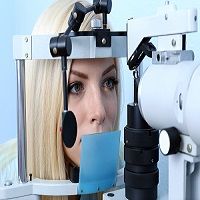Article
Anti-Vascular Endothelial Growth Factor Therapy for Neovascular AMD
Author(s):
Five years of treatment with anti-VEGF (anti-vascular endothelial growth factor) drugs seems to hold considerable promise for those with neovascular age-related macular degeneration.

Five years of treatment with anti-VEGF (anti-vascular endothelial growth factor) drugs seems to hold considerable promise for those with neovascular age-related macular degeneration (AMD), according to a recent study by the National Eye Institute and the National Institutes of Health. Half of the nearly 650 studied at the five-year mark retained 20/40 vision or better at the study’s conclusion. According to the study’s authors, “those outcomes would have been unimaginable about 10 years ago.”
Ten years ago, the best available treatment was photodynamic therapy. The new anti-VEGF drugs (bevacizumab and ranibizumab, for this study) were promising when they first became available, but these results several years out gives physicians a better sense of long-term outcomes. In the study, published by the American Academy of Ophthalmology and presented at the Association for Research in Vision and Ophthalmology’s Annual Meeting in Seattle this month, patients were randomly assigned to either of the two drugs for 1 to 3 dosing regimens for a period of two years. Five years later, they were recalled for an exam.
Most of the 647 patients available for that exam were treated 1 time or more with a drug other than their assigned drug. At the 5-year visit, 50% had visual acuity (VA) of 20/40, 20% had VA of 20/200 or worse, and 30% experienced no change.
According to the study’s authors: “Mean change in VA was −3 letters from baseline and −11 letters from 2 years. Among 467 eyes with fluorescein angiography, mean total lesion area was 12.9 mm2, a mean of 4.8 mm2 larger than at 2 years. Geographic atrophy was present in 213 of 515 (41%) gradable eyes and was subfoveal in 85 eyes (17%). Among 555 eyes with spectral-domain optical coherence tomography, 83% had fluid (61% intraretinal, 38% subretinal, and 36% sub—retinal pigment epithelium). Mean foveal total thickness was 278 μm, a decrease of 182 μm from baseline and 20 μm from 2 years. The retina was abnormally thin (<120 μm) in 36% of eyes. Between 2 and 5 years, the group originally assigned to ranibizumab for 2 years lost more VA than the bevacizumab group (−4 letters; P = 0.008). Otherwise, there were no statistically significant differences in VA or morphologic outcomes between drug or regimen groups.”
Bevacizumab may be a more effective treatment option for a small subset of patients, but both bevacizumab and ranibizumab proved more effective than older treatment methods in preserving visual acuity in patients with AMD. The authors conclude that the study’s results confirm anti-VEGF therapy as “a major long-term therapeutic advance for neovascular AMD.”



